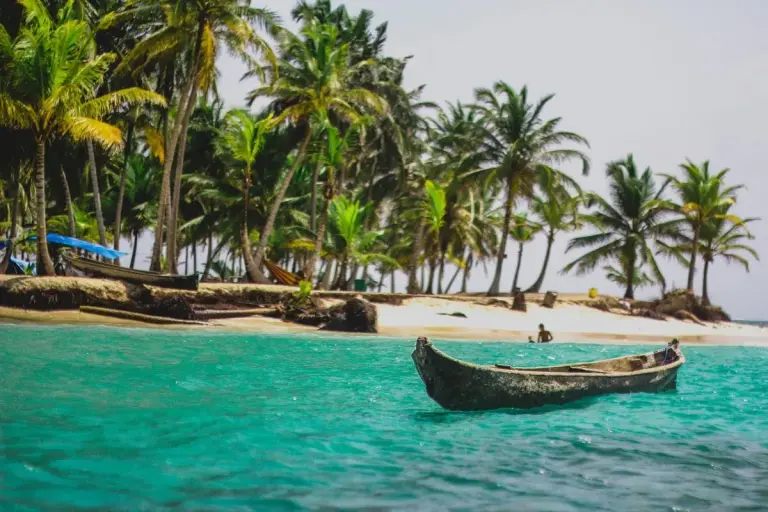Tourism generates 10 percent of Panama’s entire economic output according to a major announcement from the country’s top diplomat. Foreign Minister Javier Martínez-Acha revealed the sector’s significant contribution during the official launch of the 2026 International Economic Forum for Latin America and the Caribbean, organized by CAF, the Development Bank of Latin America. He positioned tourism as a clear driver for inclusive national development and a cornerstone of the nation’s economic reactivation strategy.
This milestone underscores a sustained and strategic national effort to promote Panama as a premier global destination. The minister pointed to consistent investment in infrastructure and international promotion campaigns as key factors behind this success. The country’s strategic location, coupled with its vast natural and cultural diversity, provides a powerful foundation for continued growth. This economic transformation is happening now.
“Tourism today functions as a clear axis for the inclusive development of the country,” Panama‘s Foreign Minister Javier Martínez-Acha stated. [Translated from Spanish]
He emphasized the positive impact the industry has on job creation and opportunity generation across the nation. The government’s focus extends beyond traditional vacation travel. Officials are aggressively pursuing a multi-pronged approach that includes urban tourism, business travel, and a strong emphasis on ecotourism.
Global Events Put Panama on the Map
Hosting major international events has become a central part of Panama’s strategy to boost its global profile. The recent First Global Challenge 2025 Robotics Olympics served as a prime example. That event, held from October 29 to November 1 at the Amador Convention Center, brought together delegations from more than 190 countries. It projected an image of Panama as a reliable and modern host for complex international activities.
“Increasingly, Panama is becoming the stage for fairs, congresses, and global activities that strengthen the economy and the positioning of the country,” added the official. [Translated from Spanish]
Each event of this scale brings international visitors, fills hotels, and generates widespread media coverage. The government views these gatherings as long-term investments in the nation’s brand. They demonstrate logistical capability and a welcoming environment for the world.
Ecotourism Emerges as a National Strength
Beyond conference halls and urban centers, Panama is leveraging its unique natural landscapes. Minister Martínez-Acha identified ecotourism as an essential component of the national tourism offering. He highlighted the growing international interest in regions like Darién, where immense biodiversity and rich local culture attract travelers seeking authentic and sustainable experiences. This focus aligns with a global trend toward more meaningful and environmentally conscious travel.
“Ecotourism has become one of the great strengths of the country, combining conservation, culture, and regional development,” Martínez-Acha specified. [Translated from Spanish]
The country’s commitment to preserving its natural heritage while sharing it with visitors creates a powerful economic model. It promotes conservation and provides jobs in rural communities. This approach ensures that the benefits of tourism growth are felt beyond the capital city.
UNESCO Recognition Boosts Cultural Tourism
A significant recent achievement for the nation’s tourism sector is the inscription of the Trans-Isthmus Colonial Route on the UNESCO World Heritage list. This historic route connects the Atlantic and Pacific Oceans and represents a fundamental piece of Panamanian history. The prestigious UNESCO designation elevates the route’s global profile and is expected to draw cultural and heritage tourists from around the world.
This recognition validates years of work to preserve Panama’s historical assets. It also provides a new, powerful marketing tool for the country’s tourism promoters. Travelers interested in history and culture now have a compelling reason to explore beyond Panama’s famous canal.
Logistics Sector Stability Underpins Growth
The robust growth in tourism is supported by the underlying strength of Panama’s broader logistics and economic framework. According to the World Bank, the Panamanian economy is projected to remain stable. It is estimated to grow by 3.9 percent in the near term and 4.1 percent over the medium to long term. This stability is a critical factor for investors and tourism operators planning for the future.
Increased public and private investment in sectors like logistics, infrastructure, and financial services has been key to strengthening the overall economy in recent years. The nation’s competitive advantages, including its strategic location, dollarized economy, and free zone regimes, create a predictable business environment. This predictability is highly valued by international companies.
Specialists from the multinational firm Interborders note that the logistics industry is being shaped by global trends like digitalization and the use of artificial intelligence for tracking goods. The push for sustainable logistics routes that combine different transport methods is also gaining momentum. These efficiencies benefit all sectors, including tourism, by ensuring smooth connectivity and supply chains.
“Beyond the numbers, the true advantage is that the country’s business environment offers something few can guarantee, which is predictability,” explained Miguel Vallejos, Branch Manager of Interborders. [Translated from Spanish]
He emphasized that this stability allows businesses to anticipate their operational needs. It is a decisive competitive advantage for attracting investments and closing new deals. The country’s main logistics engine, the Panama Canal, has also seen a strong year. It reported significant increases in both toll revenue and cargo volume, reinforcing its vital role in global trade and the national Gross Domestic Product (GDP).
Panama’s tourism sector has clearly evolved into a primary engine for economic development. With a confirmed contribution of ten percent to the national GDP, the industry stands on a solid foundation of strategic promotion, diverse attractions, and a stable national economy. The continued focus on international events, ecotourism, and cultural heritage promises to drive inclusive growth and solidify the country’s position on the world tourism map for years to come.



